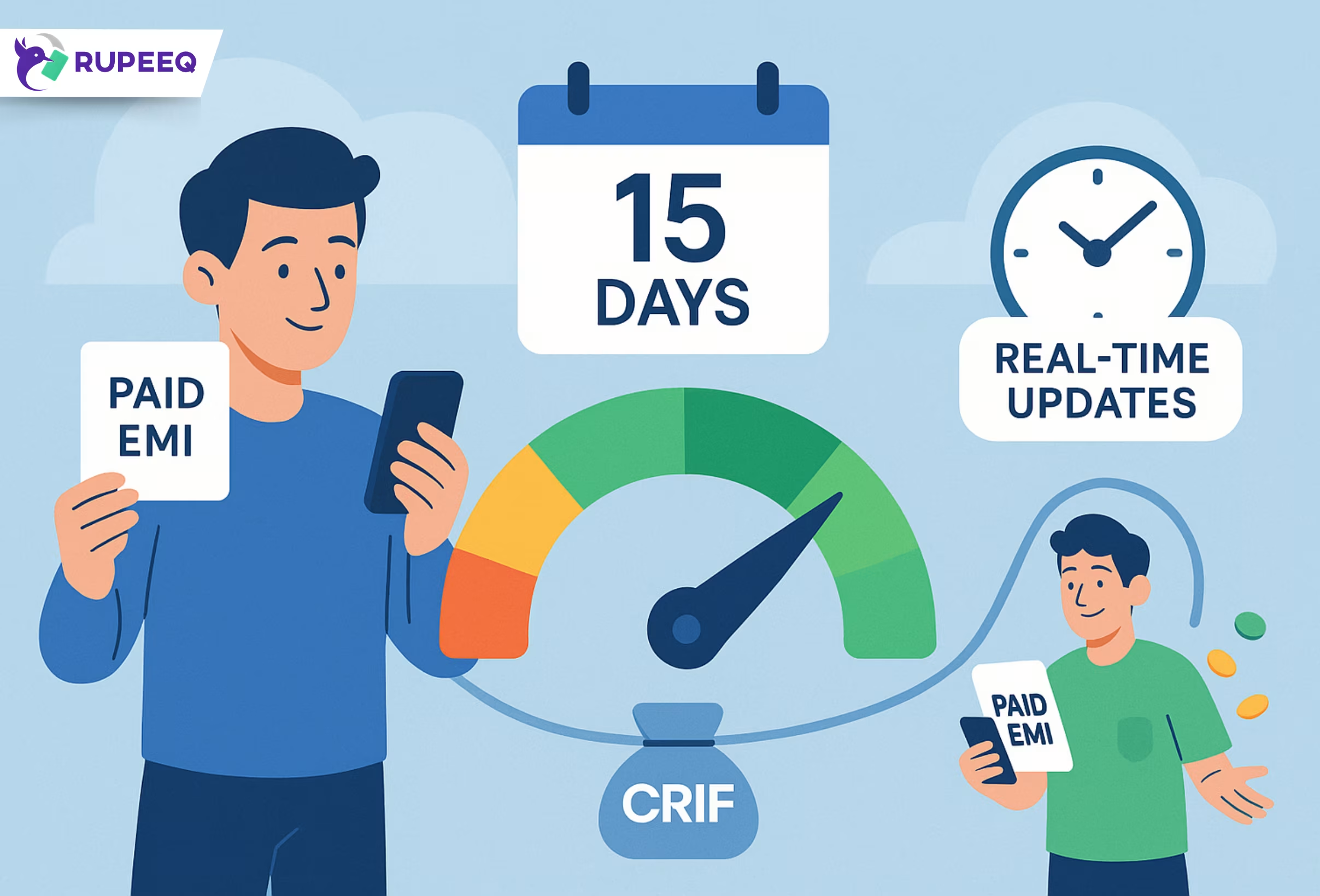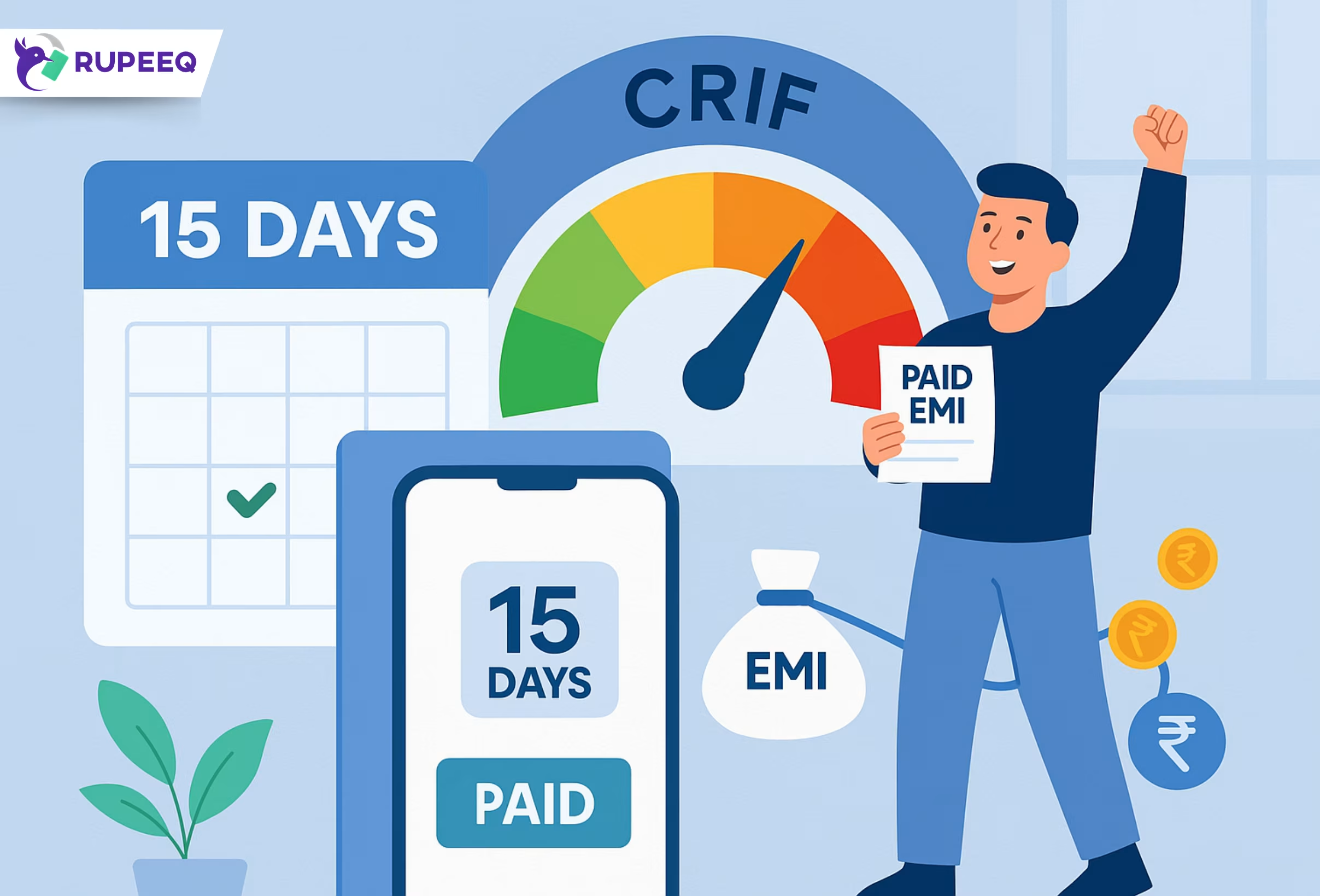Improving your CRIF score within a short span like 90 days may sound ambitious, but it is absolutely possible with disciplined credit behavior. Whether you’re looking to apply for a loan or access Buy Now Pay Later (BNPL) offers, a strong CRIF score can unlock better financial opportunities. This blog will help you understand realistic, actionable steps to improve your CRIF score in three months, and how platforms like RupeeQ can help.
What Is a CRIF Score and Why Does It Matter?
Your CRIF score is a three-digit number ranging from 300 to 900, summarizing your creditworthiness. It is issued by CRIF High Mark, one of the four licensed credit bureaus in India.
A high CRIF score (usually 750 and above) increases your chances of getting approved for loans, credit cards, and other financial products. On the other hand, a low score may lead to rejections or higher interest rates.
Is It Realistic to Improve a CRIF Score in 90 Days?
Yes, if your current score falls in the moderate range (600–700), focused efforts over 90 days can show measurable improvement. However, if your score is below 550, it may take a little longer. The strategies shared here are especially useful for people with:
- Recently missed EMIs
- High credit utilization
- Multiple unsecured loans
- No recent credit activity (new-to-credit profiles)
Step-by-Step Strategy to Improve CRIF Score in 90 Days
Below are the most important action points to help you raise your CRIF score over three billing cycles.
1. Pay EMIs and Credit Dues on Time – Every Time
One missed EMI can drop your score by 50–70 points or more. Timely repayment is the single most important factor in your credit profile.
What You Can Do:
- Set auto-debit on your bank account for loan and credit card payments.
- Clear all credit card minimum dues by the due date.
RupeeQ Tip:
If you are juggling multiple EMIs, consider a debt consolidation loan. It can merge your liabilities and reduce the risk of payment defaults.
2. Reduce Credit Utilization Below 30%
Credit utilization ratio is the amount of credit you’re using compared to your limit. A high utilization ratio signals financial stress and lowers your CRIF score.
What You Can Do:
- Limit monthly spending to 30% of your credit limit.
- If you’ve already maxed out, pay down the balance before the billing cycle ends.
3. Avoid Applying for Multiple Loans in a Short Time
Every loan application triggers a hard inquiry on your credit report. Multiple applications within a short time frame signal desperation and may reduce your score.
What You Can Do:
- Space out your applications.
- Compare offers on RupeeQ to pre-check eligibility without affecting your credit score.
4. Check for Errors in Your CRIF Credit Report
Sometimes, your low score may be due to incorrect reporting. For example, a loan marked as ‘unpaid’ even after closure, or a wrongly reported late payment.
What You Can Do:
- Download your CRIF report via RupeeQ.
- Raise a dispute online for any errors you find.
RupeeQ Tip:
Use RupeeQ ACE, powered by CRIF, to get a health report of your credit profile and see where quick improvements can be made.
5. Settle Overdue Accounts If You Can’t Repay Fully
If you’re unable to repay old defaulted loans, try to negotiate a settlement with the lender and ensure they report it as ‘settled’ or ‘closed’ to CRIF.
What You Can Do:
- Contact your lender and request a one-time settlement.
- Ensure the settlement status reflects correctly in your report.
6. Add a Secured Loan or Credit Card
Adding a secured credit product like a gold loan or FD-backed credit card can diversify your profile and boost your score if repaid on time.
What You Can Do:
- Opt for a low-ticket gold loan with manageable EMIs.
- Get a secured credit card with low annual fees.
7. Don’t Close Old Credit Accounts
Older accounts contribute to your credit history length, which is a positive indicator in your CRIF score calculation.
What You Can Do:
- Keep old credit cards active by making small purchases and paying them off fully each month.
- Avoid closing old personal loan accounts with no dues, as they reflect successful repayment history.
Sample 90-Day Credit Score Improvement Plan
| >Week Range | Action Items |
| Week 1–2 | Get CRIF report via RupeeQ, dispute errors, check overdue accounts |
| Week 3–4 | Pay all minimum dues, reduce credit utilization to <30% |
| Week 5–8 | Repay high-interest loans or consolidate debt, avoid new credit inquiries |
| Week 9–12 | Add secured credit product, maintain 100% repayment behavior |
How RupeeQ Can Help You Improve Faster
RupeeQ offers multiple tools to support your journey to a better CRIF score:
- Free CRIF Score Check: See your current status and track improvements.
- RupeeQ ACE Report: Offers detailed evaluation and tips based on your actual credit behavior.
- Pre-Approved Loan Offers: Personalized based on your credit profile to avoid unnecessary hard inquiries.
- Credit Health Tracker: Know how actions like part payments, preclosures, or credit card usage will affect your score.
Conclusion
Improving your CRIF credit score in 90 days is all about smart planning, consistency, and timely corrective measures. From reducing credit utilization to eliminating late payments, even small efforts add up. With RupeeQ’s credit insights and responsible borrowing habits, you can give your credit profile a fresh start—whether you’re planning to take a loan or just want to be future-ready.







